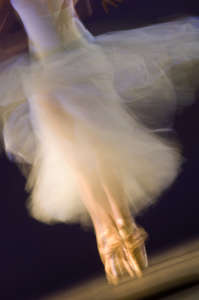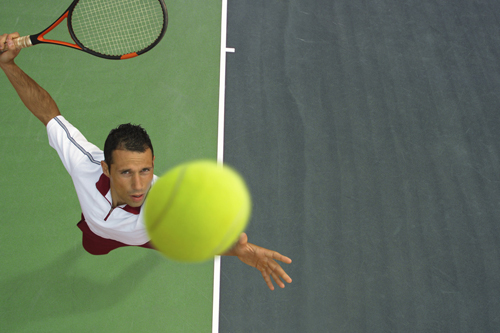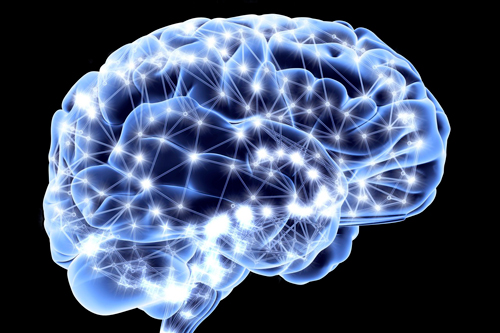 In his bestselling book Outliers, Malcolm Gladwell wrote that it takes approximately 10,000 hours of practice to become a master in a particular field. Gladwell based this claim on several studies, including one by German psychologists who researched violinists during the 1990s. The study found that, over their lifetimes, elite violinists averaged 6,000 more hours of practice than non-elite ones.
In his bestselling book Outliers, Malcolm Gladwell wrote that it takes approximately 10,000 hours of practice to become a master in a particular field. Gladwell based this claim on several studies, including one by German psychologists who researched violinists during the 1990s. The study found that, over their lifetimes, elite violinists averaged 6,000 more hours of practice than non-elite ones.
Some researchers dispute 10,000 hours as the tipping point for mastery, but there’s no disputing that more practice will tend to improve a skill. Racking up hours of practice time can forge permanent connections between mind and muscle that preserve our ability to master various tasks. These connections are made possible by two vital pieces of human equipment: proprioceptors and the cerebellum.
Proprioceptors are receptors found on nerve endings in muscles, joints, and the inner ear. They collect important information about sensations resulting from changes in the body’s movement and position. Sensory input gathered by the proprioceptors is delivered to the cerebellum, a small structure in the back of the brain. Although it represents only about 10% of the brain’s volume, the cerebellum has more than 50% of the brain’s neurons. It uses this arsenal to help us master skills in two important ways:
- It controls the timing of body movements. A neural pathway enables the cerebellum to send signals to neurons in the motor cortex (the part of the brain that controls voluntary movements). The cerebellum continually adjusts these signals according to changes in the body’s position and speed.
- It evaluates visual feedback during movement. The cerebellum also analyzes the movement of objects in our field of vision, then adjusts commands to our motor neurons to match the action. For example, if you’re playing the infield in a baseball game, the cerebellum makes sure you move to the left if a ground ball is hit to the left and move with the correct speed depending on how hard the ball was hit.
Repeated activation of the same neurons during repetition of a movement helps preserve memory of that action, making a learned movement seem instinctual. This muscle memory can result from repetitive training in everything from tennis and golf to knitting and dancing the tango.

Years of dance training can actually enable dancers to suppress signals from balance organs in the inner ear that are connected to the cerebellum. Studies have shown that eye reflexes and perception of spinning don’t last as long in dancers as in athletes whose sport doesn’t involve spinning.
When a tennis player serves an ace, for example, her brain starts to memorize what it felt like. More aces will then solidify this memory and improve the timing of synapses (connections between neurons) within the muscle so the sequence of body movements can be repeated reflexively, without conscious thought. The memory of this movement is preserved in the cerebellum, so it can provide the same directions to the motor cortex for each serve. This process can occur after repeated actions in any activity involving body movements.
Bad Habits Die Hard
Forming a correct muscle memory depends on the brain giving its full attention to the action as it is performed. The pattern of movements also needs to be consistent, or else the memory can be diluted with irrelevant or compromising information. Bad habits may come along for the ride, as evidenced by the weaknesses of golfers who may have a strong stroke when driving the ball but hit it too far to the left or right.
I was sabotaged by muscle memory in my early days as a baseball player. I had learned how to throw a ball incorrectly as a 12-year-old, not taking a full windup before letting it go. This wasn’t a problem on the smaller playing fields in Little League, where the distance between bases is 60 feet. But when I graduated to 90-foot base paths, the ball continually landed in the dirt when I tried to throw from third to first base. It took me almost a full season to untrain myself of the bad habit and retrain myself until I did it the right way without having to think about it.
Consistent action is essential for muscle memory as well; without it, the memory might never take hold. I found this out while tinkering at the piano. I never learned how to play properly, so I often hit the same keys with different fingers—even when playing the same song. I’ve composed a few songs that I’ve committed to memory (I can’t read music), but they’ll be riddled with mistakes if there’s too long a gap between sessions at the piano. My inconsistent technique has made it difficult for a distinct muscle memory to take hold.
Muscle memory did serve me well, however, during my days as a long jumper on my college track team. For a while during my freshman season, I had a tendency to foul. My foot would land beyond the designated takeoff line as I began the jump. Through many hours of practice, I finally found the right pace down the runway. Eventually I could hit the board with a fraction of an inch to spare almost every time, without thinking or looking at my feet.
Practice had almost made perfect.
Related Articles



